A pending update to the City of Long Beach's density bonus program could introduce new incentives that steer housing production toward neighborhoods served by bus and rail lines.
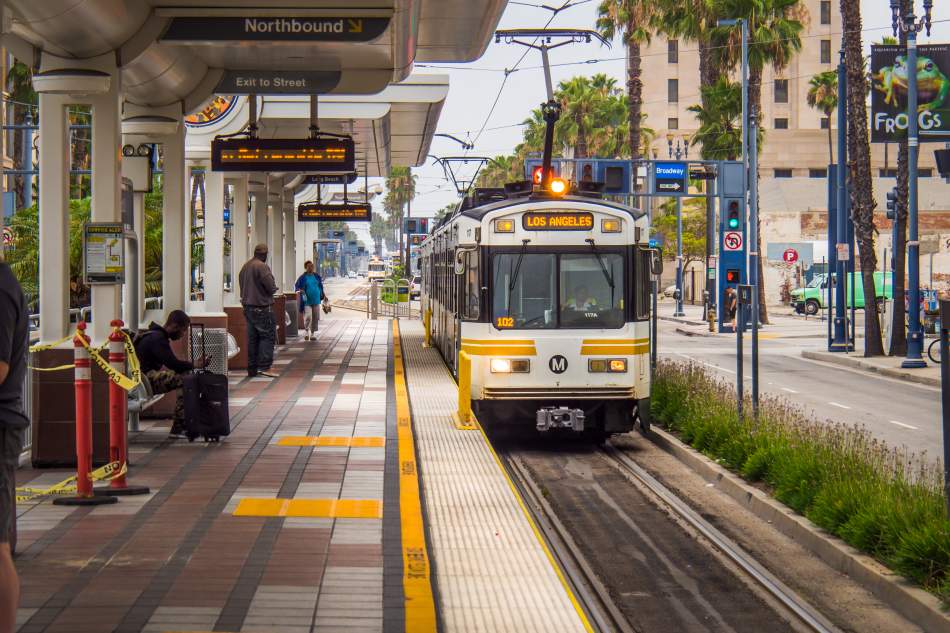 The A Line in Downtown Long BeachShutterstock / Matt Gush
The A Line in Downtown Long BeachShutterstock / Matt Gush
The enhanced density bonus ordinance, which is now in its environmental review period, would apply to all properties in the City of Long Beach on which five or more housing units can be built based on the zoning code and site area. However, unlike Long Beach's existing program, the proposed ordinance would institute two geographic tiers where more robust incentives are available due to proximity to transit lines.
- High-quality transit corridor: areas located within a half-mile of a high quality transit corridor - specifically a fixed route bus line with 15-minute peak service intervals.
- Major transit stops: areas located within a half-mile or a rail station or the intersection of two bus routes with a peak service interval of 15 minutes or less.
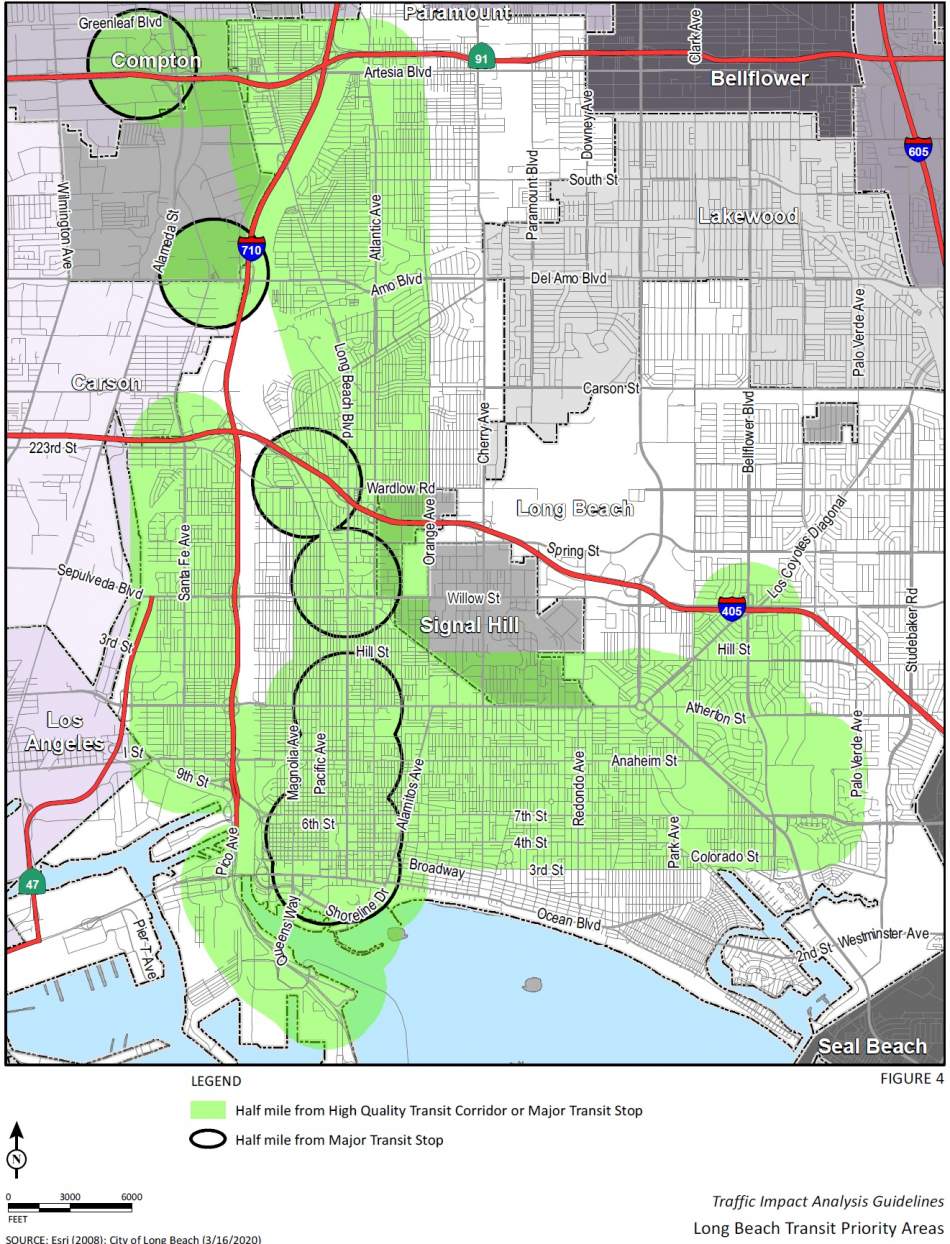 Long Beach transit priority areasCity of Long Beach
Long Beach transit priority areasCity of Long Beach
For base tier projects, meaning those located outside of a half-mile of a transit corridor or major transit stop, the incentives based on affordable set-aside (and affordability level) would be as follows:
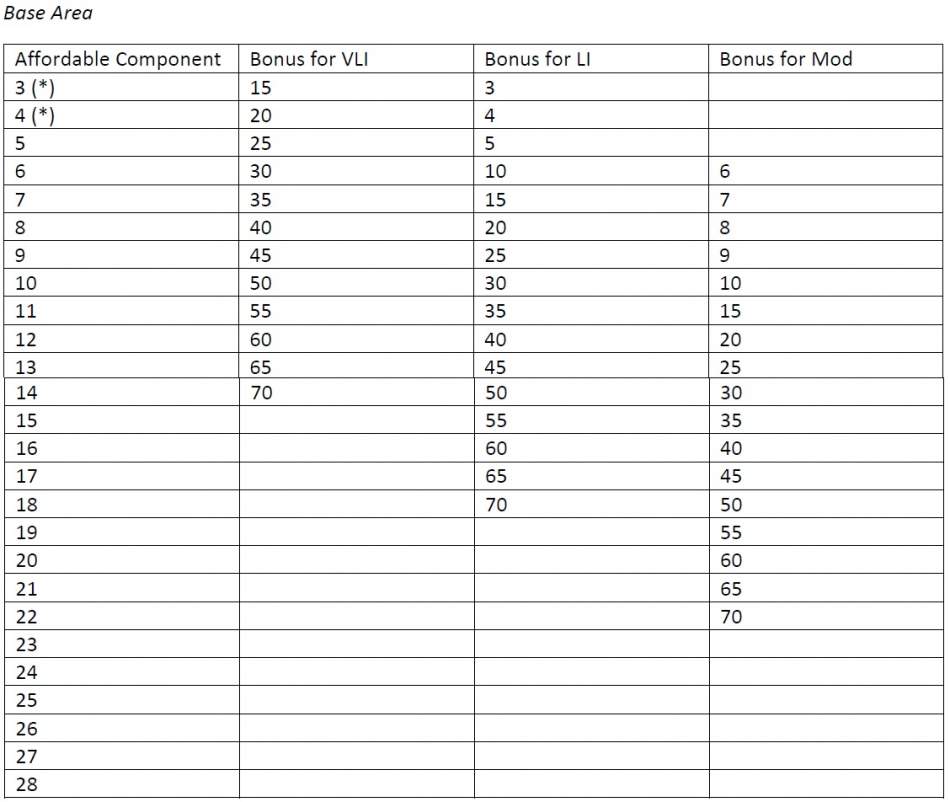 Density bonus percentages for base tier projectsCity of Long Beach
Density bonus percentages for base tier projectsCity of Long Beach
The percentages for high-quality transit corridor areas would be:
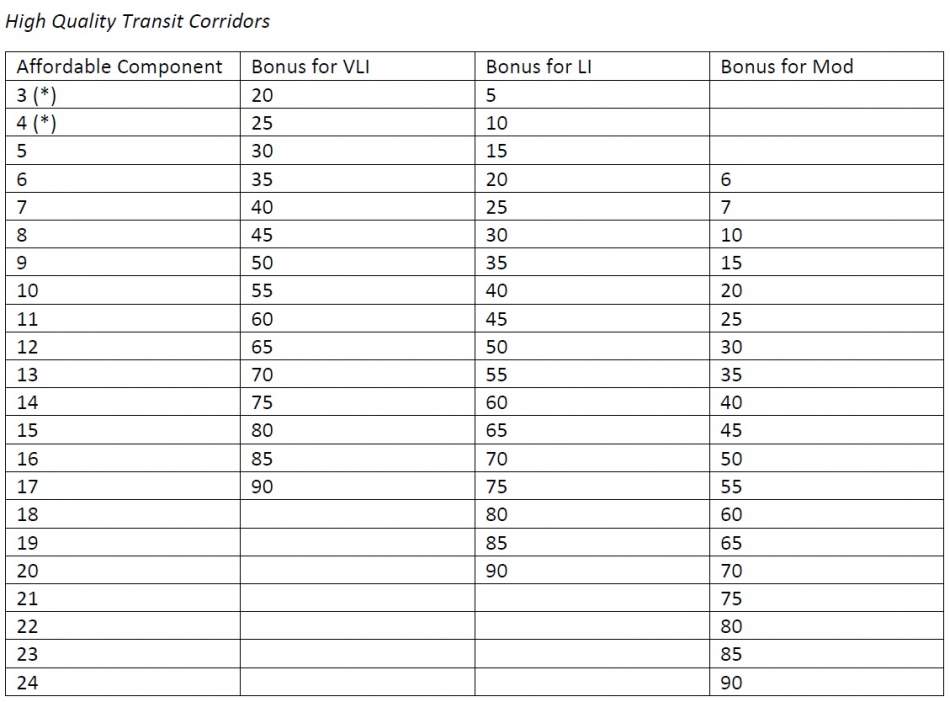 Density bonus percentages for high-quality transit corridorsCity of Long Beach
Density bonus percentages for high-quality transit corridorsCity of Long Beach
The percentages for major transit stop areas would be:
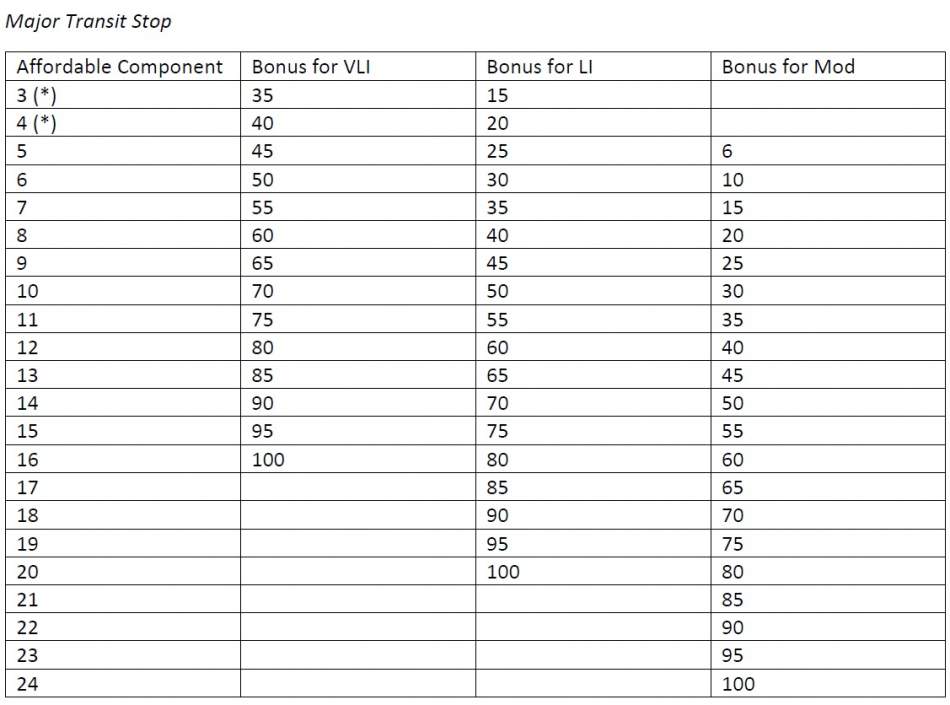 Density bonus percentages for major transit corridorsCity of Long Beach
Density bonus percentages for major transit corridorsCity of Long Beach
Applicants are not restricted for including multiple affordability levels in a single project. For example, a project could incorporate a 3 percent very low-income set-aside in addition to a 12 percent low-income set aside to achieve a 15 percent density bonus.
The enhanced density bonus ordinance is also expected to work hand-in-hand with Long Beach's new inclusionary housing policy, which was enacted earlier this year for the Downtown neighborhood and segments of Long Beach Boulevard to the south of the I-405 freeway. For these areas, additional concessions beyond increased density would be permitted based on the following affordability set-asides:

For areas outside of the inclusionary housing zone, concessions would be offered based on the following percentages:
 Number of concessions for non-inclusionary projectsCity of Long Beach
Number of concessions for non-inclusionary projectsCity of Long Beach
The menu of concessions includes:
- floor area increase of 40 percent per concession;
- 15 percent reduction in non-residential parking per concession;
- 30 percent reduction in open space per concession;
- allowance of shared open space; averaging of floor area, density, parking, open space, or access across zone;
- 15 percent reduction in transitional height requirements;
- 30 percent reduction in individual setback per concession.
The density bonus program would also offer additional height, although projects subject to inclusionary housing will have separate requirements seen in the table above. Beyond that, applicants could add up to one additional floor per incentive, with a single story being up to 12 feet in height. Projects could achieve a maximum 2-story height increase in the base area, and 3 stories in major transit stop and high-quality transit zones.
Applicants would also have the ability to request off-menu density bonus incentives, which would be subject to the approval of the Long Beach Planning Commission.
Additionally, the ordinance would permit special bonuses for projects that include larger apartments capable of housing families or on-site childcare facilities.
With the exception of 100 percent affordable developments, which are not required to provide on-site parking, parking requirements for density bonus developments would be as follows:

The enhanced density bonus ordinance is being developed in a bid to increase housing production in Long Beach - specifically outside of its Downtown neighborhood.
All affordable units created through the project are to be subject to deed restrictions for a period of at least 55 years, and any applicant would be required to replace any existing affordable units demolished to make way for new construction.
The ordinance would either sunset by October 1, 2030 - unless extended by the Long Beach City Council - or when Long Beach fulfills its 6th Cycle regional housing needs assessment requirement to create new very low-, low-, and moderate-income units.
The notion of tying density to transit is not a novel concept. Long Beach's enhanced density bonus follows in the footsteps of the City of Los Angeles' Transit Oriented Communities incentives, which have a popular tool for developers of multifamily housing since taking effect in 2017.







